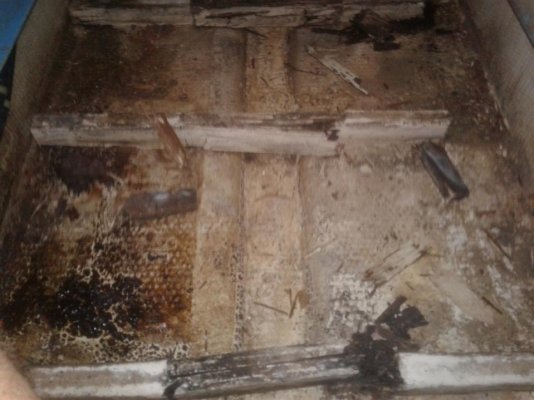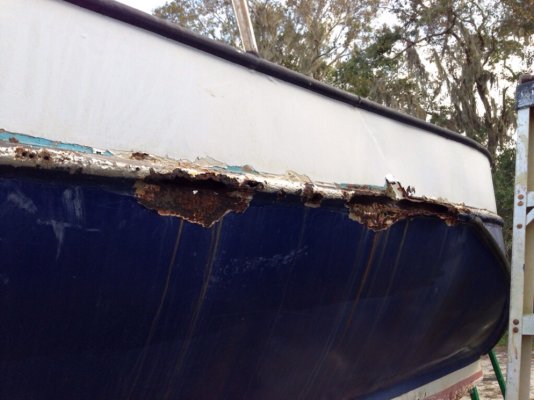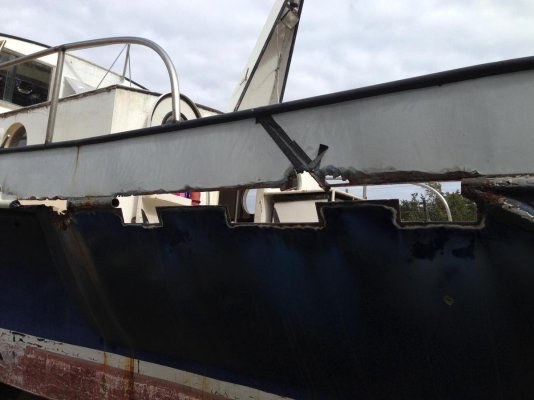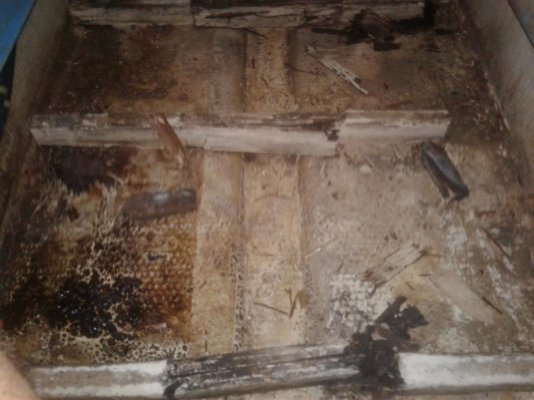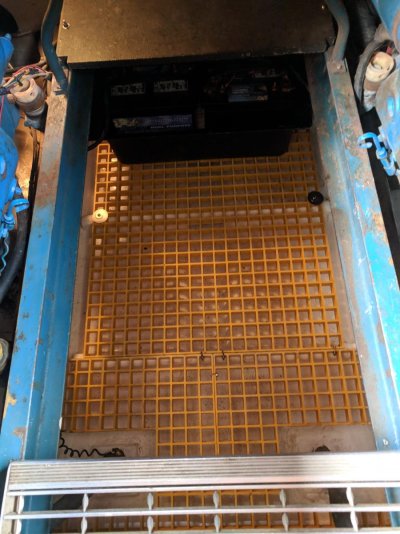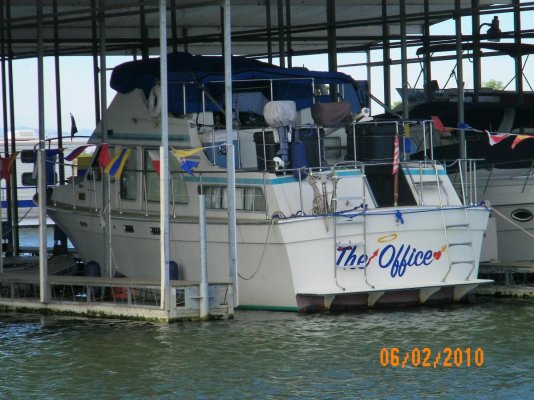More Rot Porn!!
This is one of the most amazing discoveries in my 20 year odyssey owning a Taiwanese Trawler.
Of course the decks were neglected. The fix was to keep putting screws in, and when that didn't stop the leaks, put bigger and bigger screws in. Eventually they went clear through the core and out the other side, thus serving to help supply the biomass with fresh water

On the aft deck it seems the rot became so severe the steering pulley pulled out of it's mounting. Perhaps they tried to bolt it in from the bottom, but after stubbing their toes one too may times they decided to fix it once and for all.
So, they pried up the teak, and took a circular saw, cutting a big square hole from the lazerrette hatch. Next, they took a fresh piece of non marine plywood, galvanized deck hardware, 1/2" furring strips, and a copious amount of 5200... after that dried, they opened another giant tube of 5200 and laid the deck strips back down.
This did hold long enough for them to sell it to the next owner, I suppose.
However the result was that every time the wheel was turned, the entire aft deck flexed due to the pull on the pulley, and of course it got wet the first time it rained, as the drainage channel on the hatch had been compromised, ensuring that water was forced directly into the non Marine Plywood.
The wear on the pully pin is something to behold, I couldn't find that picture. Anyway, during the deck re core when I got to the aft deck I cursed and cursed the fool who put all that 5200 down, and when I finally got that area cleared of teak this piece actually fell out...
You can't make this stuff up.


